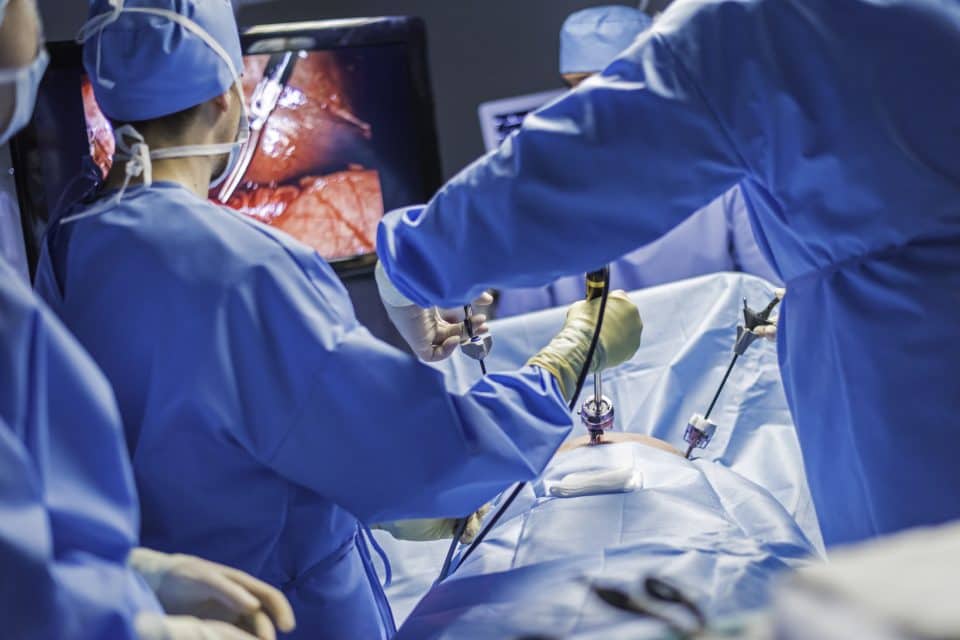
WHAT IS LAPAROSCOPIC HERNIA SURGERY?
A laparoscopic hernia repair is performed through 3-4 small incisions in the abdominal wall, and instruments including a laparoscope are inserted through these incisions. A laparoscope is a tiny camera that is used to visualize the hernia from within the abdomen. After the hernia is returned into the abdominal cavity, a piece of mesh is placed over the defect to repair the hernia. In the case of an inguinal hernia, the mesh is placed behind the abdominal wall (posteriorly), in the same position as the open preperitoneal repair. It is an excellent repair for many patients, but the decision should be made between you and your hernia surgeon. At Boston Hernia, we partner with our patients to provide a tailored approach to hernia surgery that is best for each individual.
OUR LAPAROSCOPIC HERNIA SURGERY EXPERT

Dr. Nora Fullington is an expert in laparoscopic surgery. Upon joining Boston Hernia in 2021, she trained extensively with Dr. Reinhorn and narrowed the focus of her practice from general surgery to hernia surgery. She has performed hundreds of laparoscopic hernia repairs throughout her career. She often sees patients with our experienced PA, Kortney Hodgson, and offers both open and laparoscopic hernia repairs to her patients.
WHY CHOOSE A LAPAROSCOPIC APPROACH
We make the decision on an individual basis, taking many factors into consideration. For those patients who have a thicker abdominal wall, typically associated with higher BMI (Body Mass Index), a laparoscopic approach is sometimes the best option. Laparoscopic inguinal hernia repair is performed through 3-4 small incisions in the abdominal wall, and instruments including a laparoscope are inserted through these incisions. A laparoscope is a tiny camera that is used to visualize the hernia from within the abdomen. After the hernia is returned into the abdominal cavity, a piece of mesh is placed over the defect to repair the hernia. The mesh is placed behind the abdominal wall (posteriorly), in the same position as the open preperitoneal repair.
ALTERNATIVES
It's important to note that, unlike our other repair types, a laparoscopic hernia repair requires general anesthesia. This is because the body has to be completely relaxed during the procedure. We perform the procedure outpatient, so most patients can leave the hospital 2-3 hours after surgery. It is normal to feel groggy or tired for a full day after surgery. With posterior mesh placement, our patients who undergo laparoscopic inguinal hernia surgery still have the benefit of a quick recovery, low recurrence rate, and minimal pain.
There are a few different approaches to a posterior mesh repair:
- Posterior Open approach - through one incision in the groin done under direct visualization
- Fast Recovery Inguinal Hernia Surgery is best for patients who are healthy, have an appropriately sized hernia and history, and want to avoid general anesthesia - Laparoscopic approach - through 3 small incisions using a camera
- This approach is ideal for patients with a higher BMI or who have certain other medical concerns - Robotic approach - a new, expensive platform that performs the same as laparoscopic approach in terms of the procedure itself as well as outcomes
-We do not currently offer this approach as there is no data to show improved patient outcomes for hernia surgery
